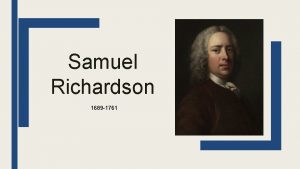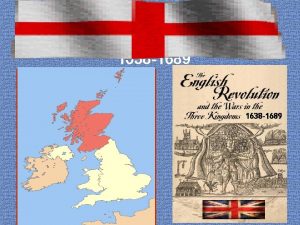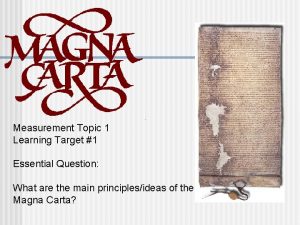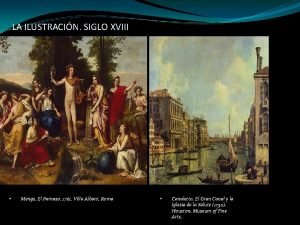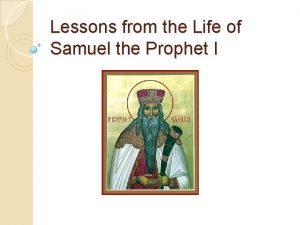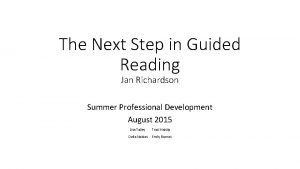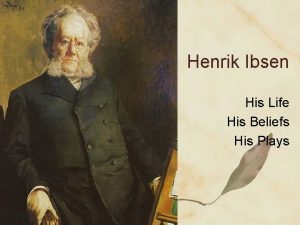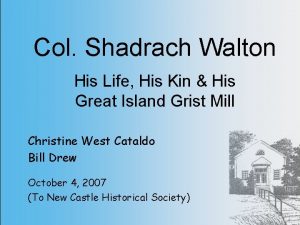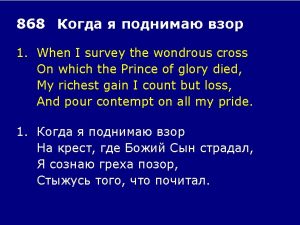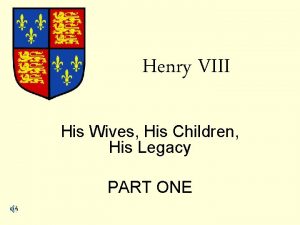Samuel Richardson 1689 1761 HIS LIFE Samuel Richardson













- Slides: 13

Samuel Richardson 1689 -1761

HIS LIFE Samuel Richardson was born in Mackworth (Derbyshire) on 19 August 1689 and died on 4 July 1761. He was the English novelist who invented the epistolary bourgeois novel. He started a new type of novel through the introduction of the plot, sentimentalism and realism in the drawning of situations and characters. He wrote the first European bourgeois novel, or novel of manners focusing on religion and virtue, on psychological insight in human motives and on the understanding of the feminine mind. He belonged to a lower middle-class family and received little education. He was a printer and a hardworking, successful writer. . His most important works are: -The Apprentice's Vademecum (1734) -Pamela: or virtue rewarded (1740) -Clarissa: or The history of a Young Lady (1747) -Collections of letters that deal with How to Think and Act justly and prudently in the common concern of human Life -Pamela in her exalted condition (1742) -The History of Sir Charles Grandison (1753 -54), dealing with a hero who is a model of benevolence).


FEATURES OF THE BOURGEOIS NOVEL - Bourgeois novels are based on a single story which no longer deals with picturesque and fantastic episodes ( Defoe); - the stories are set in domestic environments; - their male characters aren't heroic knights, picaresque rogues or outcasts but they are exclusively new middle class members; - realism is mainly used to define characters and situations linked to mental processes and feelings; - Richardson shows off his ability in understanding the female sex and his psychological insight in human behaviours ; - his novels deal with love stories with happy or moving dramatic endings (Clarissa); - they are written in the form of letters and their task is to share a moralizing purpose.


RICHARDSON’S FIRST NOVEL: PAMELA (1740) Richardson became a novelist almost by accident, at the age of fifty-one, when he was asked to write a little volume of letters to be used as models by rough and semi-educated country people for their personal correspondence. He was exited by the situation and had the ispiration for his first novel: “Pamela” or “Virtue Rewarded”. It is an epistolary novel (it was written as a series of letters) in four volumes. This novel emphasizes Richardson’s psychological insight in human behaviour and strong “empatia” with the female sex, in fact the protagonist is a woman.

The novel tells the story of Pamela Andrews, a 15 -year-old maid who works for Lady B. , her mistress. When the noblewoman dies, her son, Mr B. , takes Pamela into his service but he soon tries to seduce her. Pamela always tries to defend her virtue (her chastity ) and refuses his employer’s sexual advances until Mr B. , who is really in love with Pamela, asks her to marry him. So, at the end, Pamela’s virtue (the most important theme of the novel) is rewarded with the best reward which a middle-class woman would wish at that time: the marriage with a nobleman and the consequent improvement of her social status (a typical theme of the 18 th century literature) so the novel simbolically celebrates the union of the most important social classes of the rime: nobility and middle-class.

A BEST-SELLER AND A PSYCHOLOGICAL NOVEL Pamela” can be considered the first best-seller in English literature because of his great success due, above all, to its epistolary form in first person narrator. Thanks to it, in fact, the reader can access to Pamela’s thoughts and feelings: it’s the first example of psychological novel in English literature. This technique was later developed in Richardson’s next work “Clarissa”.

'Clarissa Harlowe' The English novel 'Clarissa' was written by Samuel Richardson and It's one of his three epistolary novels. It deals with the story of Clarissa Harlowe, a beautiful and virtuous middle-class girl that refuses to marry an old, ugly but wealthy man, Mr Solmes, because she's in love with Lovelace, under whose protection, she imprudently places herself after running away from home. Unluckily, Lovelace is an unscrupulous rake who attempts Clarissa's virtue, manages her to drugs, rapes her and finally asks her to marry him but Clarissa refuses and eventually escapes from Lovelace. Besides, Clarissa is abandoned by her family and banished from society by the harsh moral code of the time. In the end, she dies Saint-like, while Lovelace is killed in a duel by Colonel Morden, Clarissa's cousin.

IN DEFENCE OF A HARSH STATUS QUO Differently from the other epistolary novels 'Clarissa Harlowe' has a much more complex structure and an ambiguous intent. In this novel, Richardson defends a status quo which is against all those who dared to break a strict code of behaviour. In fact, Clarissa's death can be considered like a supernatural equivalent of the necessary return of all daughters to parental authority, to their father. This reminds us to the patriarchal social system in which the father is the head of the family, that mirrors a male oriented society.

THE MODEL OF ALL DAUGHTERS Clarissa embodies a new type of a rebel heroine and she can also be considered a model for all daughters because she rebels against her father and men in general and, at the end of the novel , she dies like a Christian martyr.

SIR CHARLES GRANDISON The History of Sir Charles Grandison, epistolary novel by Samuel Richardson, published in seven volumes in 1754. The work was his last completed novel, and it anticipated the novel of manners of such authors as Jane Austen. Sir Charles Grandison is a gallant nobleman known for his heroic integrity and magnanimity. He rescues the honourable Harriet Byron when she is kidnapped by Sir Hargrave Pollexfen, her spurned suitor. Eventually, Grandison and Byron fall in love

The end Made by Emma Gugliotta, Sofia Chiaramonte, Diana Bommarito.
 Samuel richardson life
Samuel richardson life Revolutia glorioasa rezumat
Revolutia glorioasa rezumat Anglia monarchia
Anglia monarchia Szban
Szban English bill of rights 1689
English bill of rights 1689 1761-1526
1761-1526 Que son las ideas ilustradas
Que son las ideas ilustradas Habla señor que tu siervo escucha dibujo
Habla señor que tu siervo escucha dibujo Lessons from the life of prophet samuel
Lessons from the life of prophet samuel The 3 fs of resume writing
The 3 fs of resume writing The next step in guided reading
The next step in guided reading Terry
Terry Flux richardson number
Flux richardson number Joshua phillips maddie clifton
Joshua phillips maddie clifton
